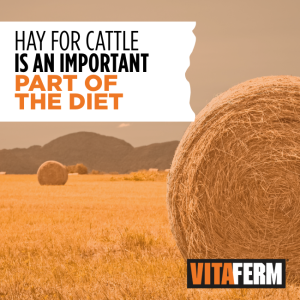It’s never too early to start planning how you’re going to get your newborn calves off to a thriving start, especially in the coldest months of the year. If you are 30 to 60 days away from calving, you need to start now to ensure that your calf crop will have the nutrients it needs to get a jump start on life and keep warm naturally in its initial time outside the womb.
Calf vigor and colostrum quality start with the mother cow and her body condition in the last trimester. Cows that are thin and weak will have weaker calves that don’t have as much reserves or “brown fat” to produce energy needed to stay warm. Additionally, properly nourished calves go through reserves slower than undernourished calves. Thus, making sure cows have plenty of energy and protein in their diet before they calve is important because when they calve, the calves have more energy and vigor. Secondary to providing energy, adequate levels of protein in the cows’ diet will produce better colostrum, and the higher the quality of colostrum, the better start the calves will have.
For those cows that need some extra supplementation, BioZyme® offers a full line of VitaFerm® Concept•Aid® minerals, both in loose and tub form. All BioZyme products contain Amaferm®, a precision prebiotic designed to enhance digestibility by amplifying the nutrient supply for maximum performance. Amaferm is research-proven to increase the energy available to the animal resulting in more milk production as well as the ability to initiate and maintain pregnancy and fertility.
Getting a Good Start
Not only is the quality of the colostrum vital, so is getting it into the calf in a timely manner after birth. The sooner the calf starts nursing, the sooner its circulation and digestive tracts start working, helping warm the calf internally. Delays in receiving colostrum can result in a dehydrated calf which will have less blood flow and will be more susceptible to freezing because of that lack of adequate blood flow.
If you think your calf requires additional nutrients or a boost to encourage it to eat, Vita Charge® offers two liquid supplements to kick start intake and digestion. Vita Charge Liquid Boost® and Vita Charge Neonatal are supplements that support digestive health and promote feed and water intake during times of stress and recovery. Neonatal is designed specifically for newborn animals and contains fermentation products, B vitamins and antioxidants.
Once your newborn calf has drank, be sure to provide it adequate bedding and windbreaks. Since many producers do calve outside or turn out within 48 hours, keeping a dry, bedded area for the calves to lay in out of the wind is important. Bedding such as straw, old hay, excess hay or corn stalk bales work well for the calf to get nestled into and stay off of the frozen ground or out of the mud.
Just as important as bedding, is protection from the wind. The wind chill can lower and animal’s temperature faster than a cold temperature alone. When the calf’s body temperature drops below 101 degrees, it can’t thermoregulate anymore. It might be above freezing, but if it is really windy that can be more detrimental than a 20-degree day with no wind.
Warming up a Cold Calf
Producers can take as many preventative measures as possible, but bitter temperatures combined with a stubborn calf or inattentive mother cow will likely result in a calf that gets too cold and needs some help getting warm. Several methods are available to warm the calf up:
- Warm water bath. This is potentially the fastest way to warm a calf; however, there are several considerations to think about. Don’t use water that is too hot because the calf will chill faster when it returns to the cold. And don’t totally clean the calf off; if all the amniotic fluid is removed, the calf might lose its scent, and the mother cow might not claim it back. If you do use a warm water bath, make sure the calf is completely dry before returning it outside. And finally, if you think there is any chance of frostbite, don’t vigorously rub the calf, as that could potentially cause more tissue damage than what may have already occurred.
- Electric box heater. This is an efficient method to dry and warm up calves that get too cold if you have the heated huts on hand. Be sure to sanitize the huts after each use to prevent the spread of sickness like scours.
- Warm air in the lungs. Warming the calf internally is another effective way to heat the calf entirely. This could be by putting them in a small enclosed area with a heater blower, like an office in your barn, the floorboard of your vehicle or even a makeshift heated box. Just be sure to have a clean area that is well ventilated where the calf won’t burn itself on the heat source.
Cold stress on the calf crop is one more stressor that the producer has to think about. With proper nutritional planning for the gestating cow herd and proper preparation for a bedded area away from the wind, keeping calves from the cold is a little simpler.



